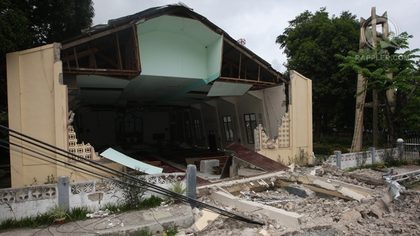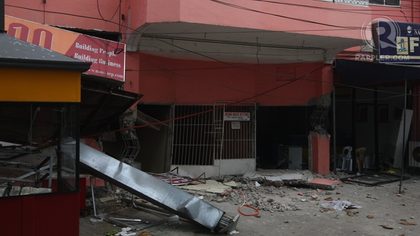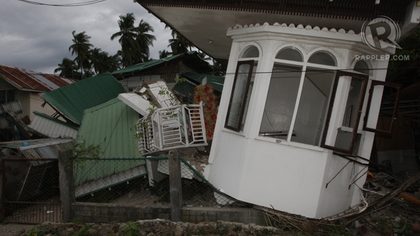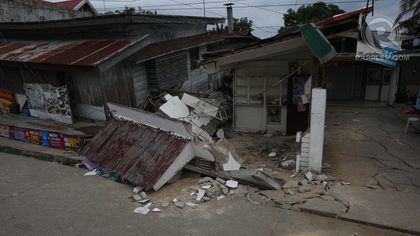SUMMARY
This is AI generated summarization, which may have errors. For context, always refer to the full article.

MANILA, Philippines – The road to recovery is rough for Guihulngan, one of Negros Oriental’s biggest and most populous cities, after a recent magnitude-6.9 earthquake left it with no signal, little water, and up to P37-M worth of damaged bridges.
Calls and text messages still cannot get through in the area because cellphone signals from Globe and Smart, the Philippines’ two biggest mobile networks, are still down in Guihulngan City, according to the latest update from the National Disaster Risk-Reduction and Management Council (NDRRMC) on Wednesday, February 8.
The city’s water supply system is still damaged and electric facilities are down, NDRRMC said in its 8 am update.
The agency also said 4 bridges remain impassable in the city, with damages amounting to about P32.7-M.
The earthquake last Monday, February 6, also left at least 2 churches totally damaged and other public structures, such as the city’s hall of justice and public market, partially damaged, according to the NDRRMC. The quake damaged 8 houses in Guingulhan out of a total of 137 damaged houses in all the affected areas, the NDRRMC added.
The NDRRMC has put the death toll in the city at 13 – half the total number of deaths due to the quake – with the youngest casualty at 7 years old and the oldest at 62.


On Tuesday, February 7, Guihulngan City Mayor Ernesto Reyes reiterated his appeal for food, water, and medicines for affected residents.
“Many of them may have no protection over their heads as they spend the evening,” Reyes told Rappler. “But I’d rather risk that they, say, get wet in the rain than having debris falling on their heads.”
Little known-city
Its size is one of the factors that could make recovery difficult for Guihulngan. While little known, it is one of Negros Oriental’s biggest locality in terms of population and land area.
Guihulngan is Negros Oriental’s 3rd most populous locality with a population of 91,358, based on the latest data from the National Statistical Coordination Board (NSCB).
The biggest in terms of population is Negros Oriental’s capital, Dumaguete City, with a population of 116,392, followed by Bayawan City with 110,250.
Guihulngan is even bigger than Dumaguete. It has a land area of 38,856 hectares while Dumaguete has 3,362 hectares, according to the NSCB.
The NSCB describes Guihulngan as “partially urban” but the city’s income classification is not displayed on the NSCB website as of posting time.
It is also one of one of the 16 controversial municipalities whose cityhood the Supreme Court declared as constitutional (after an initial decision saying otherwise) – one of the grounds for impeaching Chief Justice Renato Corona, who is now on trial.
The earthquake-affected province of Negros Oriental is a first-class province with a population of 1,231,904, according to the NSCB. – Rappler.com

Add a comment
How does this make you feel?
There are no comments yet. Add your comment to start the conversation.